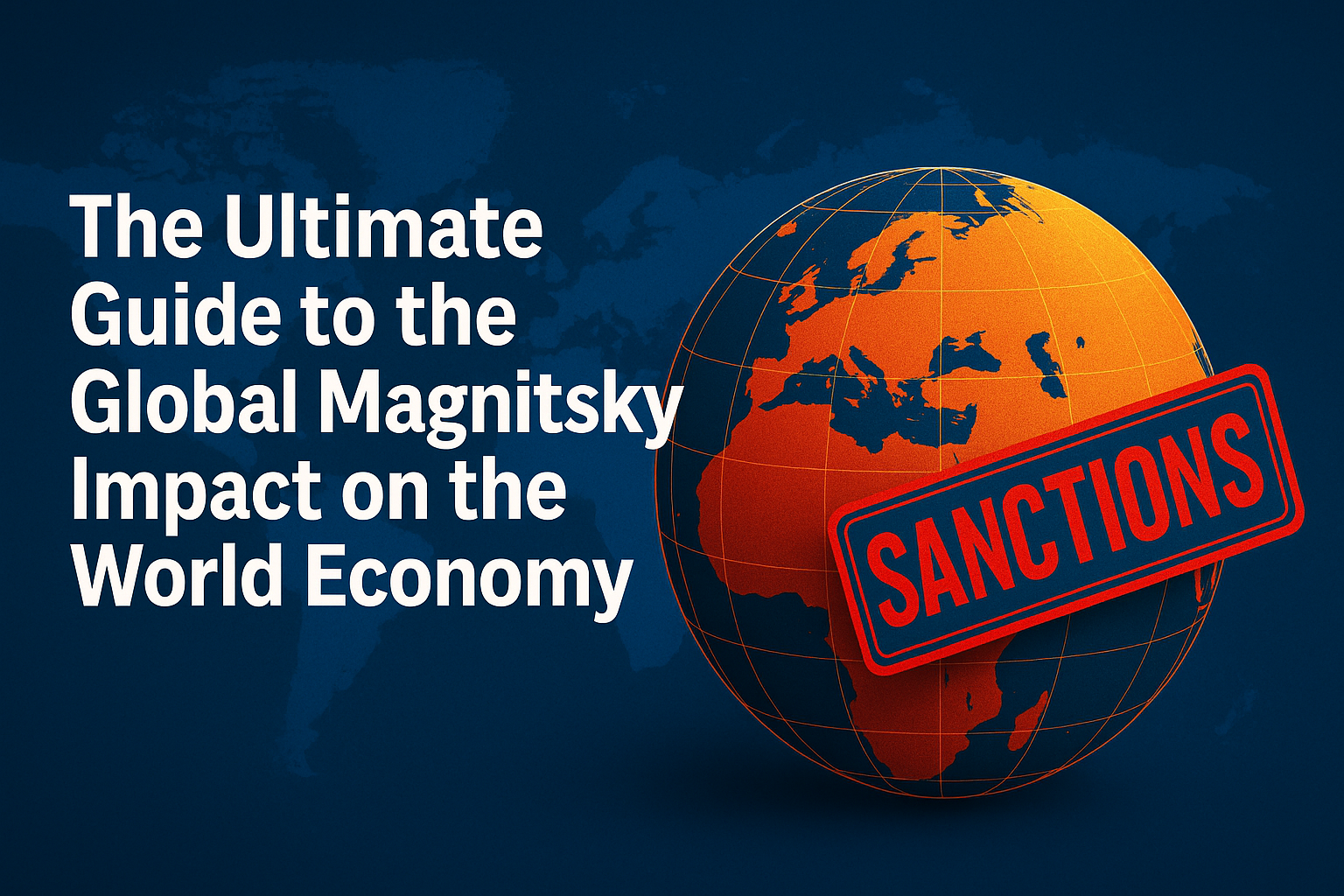Every day, global financial systems are shaped by powerful tools used by governments to enforce human rights and combat corruption. The Global Magnitsky sanctions—a landmark legal instrument empowering countries like the U.S., European Union, United Kingdom, and Canada—freeze assets, impose travel bans, and restrict business with designated individuals.
But what are the real impacts on the world economy? From emerging markets to global investors, the consequences ripple far beyond the directly targeted individuals. In this ultimate guide, you’ll discover how Magnitsky sanctions influence macroeconomic trends, corporate strategy, financial flows—and what it means for the future of global governance.
What Are Magnitsky Sanctions? Origins & Evolution
Initially enacted in 2012 in response to the death of Russian lawyer Sergei Magnitsky, the sanctions were originally Russia-specific. In 2016, the U.S. expanded the law through the Global Magnitsky Human Rights Accountability Act, allowing sanctions against individuals worldwide for serious human rights abuses or significant corruption.
Since then, the United Kingdom, European Union, Canada, and Australia have adopted similar frameworks, establishing a multilateral regime of targeted sanctions.
How Magnitsky Sanctions Work: Mechanisms & Scope
Typical sanctions include:
- Asset freezes: Bank accounts and properties are blocked.
- Travel bans: Individuals are prohibited from entering participating countries.
- Financial exclusion: Entities are cut off from global financial systems.
These sanctions are implemented through executive orders (e.g., U.S. EO 13818) and managed by agencies like OFAC (Office of Foreign Assets Control).
Economic Impact on Targeted Individuals & Regimes
Real-world examples:
- Russia: Businesses and oligarchs lost access to global markets and capital.
- China: Officials linked to abuses in Xinjiang faced sanctions, straining diplomatic and trade ties.
- Myanmar: Military leaders involved in the 2021 coup had assets frozen and were ostracized from financial systems.
- Brazil (2025): The recent sanction of Supreme Court Justice Alexandre de Moraes triggered banking sector disruptions and raised regulatory risk concerns.
These actions often result in reputational damage, frozen funds, blocked transactions, and a cascade of commercial consequences.
Macro Effects on National Economies & Global Markets
Beyond individuals, entire economies feel the sting:
- Russia: Post-2014 sanctions and the 2022 invasion of Ukraine led to a GDP contraction of over 2.1% and long-term isolation from Western markets.
- European Union: Estimated losses of up to €200 billion by 2022 due to counter-sanctions and restricted energy flows.
- Global investment sentiment: Markets react to sanction-related volatility, affecting foreign direct investment and cross-border lending.
Sanctions can also redirect trade routes, shift financial partnerships, and reshape geopolitical alliances.
Enforcement Challenges & Critiques
While powerful, the Magnitsky regime faces several issues:
- Geographic imbalance: Critics note underuse in regions like the Middle East, South Asia, and Africa.
- Political selectivity: Designations sometimes reflect foreign policy agendas more than consistent human rights standards.
- Enforcement gaps: Loopholes in offshore finance, crypto assets, and third-party banking allow some actors to evade consequences.
Empirical research suggests mixed results: not all sanctions lead to measurable improvements in rights or anti-corruption outcomes.
Emerging Trends & Future Directions
The Magnitsky framework is evolving rapidly:
- 2024–2025 expansions: New cases in Latin America and sanctions targeting forced labor in East Asia.
- Brazil’s 2025 example: Created political shockwaves and financial sector volatility.
- Financial system realignment: Growing reluctance by international banks to serve at-risk jurisdictions.
As regulatory frameworks expand, private sector compliance teams must adapt to more complex, cross-border standards.
Strategic Implications for Stakeholders
- Governments: Must weigh human rights priorities against geopolitical and economic interests.
- Businesses: Face elevated compliance risks and must invest in screening tools and legal counsel.
- Investors: Adjust exposure to sanctioned or high-risk jurisdictions.
- Civil society: Plays a growing role in collecting evidence and advocating for designations.
Key Takeaways
- Targeted sanctions have real economic and symbolic effects.
- Entire economies can suffer collateral damage due to exposure to sanctioned individuals or regimes.
- Effectiveness is uneven, and enforcement remains a challenge.
- Magnitsky regimes are expanding, with more countries adopting similar measures.
FAQ – Common Reader Questions 
What’s the difference between U.S. and EU Magnitsky regimes?
The U.S. focuses on both corruption and human rights; the EU emphasizes rights violations specifically.
Do these sanctions really change behavior?
Mixed evidence: they often isolate offenders but don’t always result in political reform.
Can individuals evade sanctions using crypto or offshore firms?
Yes, though regulators are increasingly targeting these gaps.
How do banks handle transactions involving designated persons?
Most block them outright; some conduct enhanced due diligence to avoid secondary exposure.
